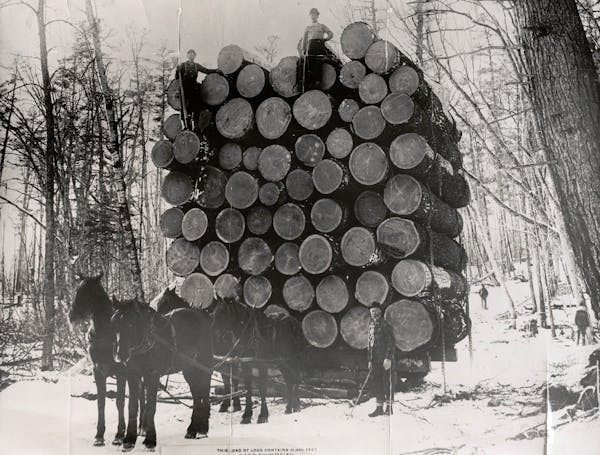Listen and subscribe to our podcast: Via Apple Podcasts | Spotify | Stitcher
Minnesotans trying to unload paint, gasoline, batteries and other hazardous waste from their basements or garages often don't need to look far for a place to take it.
The state is a national leader for its extensive household hazardous waste programs, which are operated by every Minnesota county. Some counties have entire facilities dedicated to accepting hazardous waste, while others hold regular events to take the materials.
"I have to say that this state has better coverage than any other," said Jennifer Volkman, the household hazardous waste statewide program coordinator for the Minnesota Pollution Control Agency (MPCA).
But what happens to all of this waste? This question came up in a conversation recently between myself and friend Sean Hayford Oleary. He submitted the question to Curious Minnesota, the Star Tribune's reader-powered reporting project.
Hayford Oleary keeps a box of hazardous waste in his garage that he takes to Hennepin County's Bloomington drop-off center roughly once a year. Visitors drive into the facility and staff remove the materials from the car.
"It's kind of amazingly easy," Hayford Oleary said.
A lot of the hazardous waste — but not all of it — is recycled into new products and fuel. The material that can't be recycled is typically sent to specialized hazardous waste incinerators, which are located outside Minnesota.
Paint comprises the majority of what people drop off at hazardous waste facilities. Latex paint is sent to Amazon Environmental in Fridley, which recycles it into new paint. That paint can be purchased at Habitat for Humanity's ReStore locations.
"Not many states have this ability" to recycle paint locally, said Louisa Tallman, operations manager for Hennepin County's Household Hazardous Waste program. "So, we are so lucky."
Gasoline and solvent-based products, such as paint thinner, are shipped to facilities that turn it into an industrial fuel to power facilities such as cement kilns. Oil-based paints and varnishes are also turned into fuel.
Motor oil is filtered by North Mankato-based Loe's Oil Co. and used at asphalt plants, Volkman said. Loe's also recycles antifreeze collected by hazardous waste facilities.
Electronics are sent to Wisconsin-based Dynamic Lifecycle Innovations, which breaks them down into their respective material types such as metal, plastic, wood and glass, Tallman said. That raw material is then sold across the country and internationally.
Some toxic waste, such as pesticides, cannot be recycled. Those and other non-recyclable products, such as aerosol cans, are sent to specialized incinerators outside the state that are designed to safely dispose of hazardous waste. Tallman said incineration only occurs when other disposal options aren't available.
Minnesota considered building one of these facilities in the 1980s, but that controversial plan never materialized.
"These [incinerators] are exceedingly regulated," Tallman said. "And the environmental controls are state of the art."
Rechargeable batteries pose a significant challenge to the waste system, as they can catch fire if tossed in the regular trash. Batteries dropped off at hazardous waste facilities are typically sent to Call2Recycle, which contracts with companies to sort and process them to remove valuable materials such as lithium, cobalt, steel and other metals, according to the organization.
Minnesota's pioneering 1991 battery law that forced battery manufacturers to help pay for their disposal was one factor that spurred the creation of the Rechargeable Battery Recycling Corp., which is now known as Call2Recycle. There are 432 drop-off sites across the state, many located at retail locations, according to the organization.
Hazardous waste facilities particularly want to receive mercury, Volkman said. Mercury is hazardous in the home, but it's also a risk to the environment if tossed in the trash. Mercury is found in older thermometers and thermostats as well as fluorescent light bulbs. Recovered mercury is put in storage, Volkman said.
"We know that mercury is still getting into the solid-waste stream," Volkman said, referring to studies of incinerator ash. "It's declining, but super, super slowly."
It must be transported carefully, however. Volkman noted that one mercury spill in a car resulted in the vehicle having to be destroyed.
There are some products that hazardous waste facilities cannot accept. Among them are explosives such as fireworks and ammunition, which can be difficult to dispose of properly, Tallman said. They also do not accept pharmaceuticals, though there are other dropoff sites that specialize in that.
Tallman receives a lot of questions about new products, such as at-home medical devices like electronic glucose monitors. These monitors are difficult to dispose of properly because they are part infectious and part electronic, she said.
State law requires all counties to have a plan for hazardous waste management, including a strategy for separating hazardous waste from the primary trash. The MPCA negotiates statewide contracts with the companies that recycle and dispose of the collected material.
Volkman said that there are generally no fees to drop off material — with some exceptions — because it is an incentive-based program.
"You want people to participate," Volkman said. "You want them to bring stuff in."
If you'd like to submit a Curious Minnesota question, fill out the form below:
Read more Curious Minnesota stories:
How much of what we think we're recycling is actually getting recycled?
The Twin Cities area is recycling more than ever. Why hasn't landfilling declined?
Is Minnesota's recycled waste really being reused?
How do cities make Mississippi River water safe to drink?
Is it safe to swim in Twin Cities rivers, or are they all too polluted?
What happens to all of the de-icing fluid sprayed on planes at MSP airport?







